|
Sunday:
October 21, 2001 | |
0319 GMT |
 |
Station lifeboat to launch
A Russian Soyuz spacecraft is awaiting blastoff at 0859 GMT (4:59 a.m. EDT) today from the Baikonur Cosmodrome in Central Asia, bound for the international space station. The Soyuz TM-33 capsule will become the new escape vehicle for Alpha's resident crew, replacing the existing craft that is reaching the end of its certified lifespan.
 |  |

|
 |
Discovery helps to solve mystery in globular clusters
In a discovery which may help to solve a long-standing mystery, astronomers from the University of Manchester's Jodrell Bank Observatory and other members of an international team have found gas between the densely packed stars that make up the globular cluster, 47 Tucanae.
 FULL STORY FULL STORY
 |  |
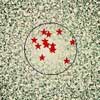
|
 |
What new science could be done in space?
In 1986, University of Houston researchers sitting at a lunch table discussed what kind of new science could be done in the vacuum of space. Fifteen years later, their efforts have led to an orbiting laboratory, technologies with potential markets in the billions of dollars per year, a plan to transmit solar power from the Moon to the Earth, and hundreds of millions of dollars in economic benefit to Houston.
 FULL STORY FULL STORY
 |  |

|
 |
|
Saturday:
October 20, 2001 | |
0239 GMT |
 |
Alpha crew returns to space station after quick trip
Expedition Three crewmembers boarded their Soyuz return capsule at the International Space Station Friday and moved it from the Earth-facing port of the Zarya module to the first-ever linkup to the new Pirs Docking Compartment.
 MISSION STATUS CENTER MISSION STATUS CENTER
 |  |
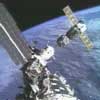
|
 |

Video coverage for subscribers only:

 VIDEO: SOYUZ CAPSULE PULLS AWAY FROM ALPHA QT or RV VIDEO: SOYUZ CAPSULE PULLS AWAY FROM ALPHA QT or RV
 VIDEO: CAPSULE MAKES FIRST DOCKING TO PIRS QT or RV VIDEO: CAPSULE MAKES FIRST DOCKING TO PIRS QT or RV
 MORE: COMPLETE SFN+ VIDEO INDEX MORE: COMPLETE SFN+ VIDEO INDEX

|
First European woman heads for Alpha
ESA's French astronaut Claudie Haignere will become the first European woman to visit the International Space Station after she lifts off from Baikonur on board a Russian Soyuz vehicle on Sunday for a ten-day space mission.
 FULL STORY FULL STORY
 |  |

|
 |
X-ray emissions detected from elusive cosmic objects
A type of celestial object that has long stumped astronomers has been found to emit X-rays, thus proving a theory of how the objects form. Scientists reported this week that these objects, called Herbig Haro objects, are produced by high velocity shocks.
 FULL STORY FULL STORY
 |  |
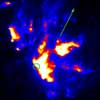
|
 |
NASA helps radar project for monitoring oil fields
Radar images of the surface of an oil field are helping scientists understand how rocks deep within the field behave, which may help oil companies reduce costs and increase production.
 FULL STORY FULL STORY
 |  |

|
 |
|
Friday:
October 19, 2001 | |
0107 GMT |
 |
Commercial Earth-imager rockets into space on Delta
It's name is QuickBird and it will take pictures of Earth's surface with unprecedented clarity for a commercial eye-in-the-sky imaging satellite. The spacecraft was successfully launched into orbit Thursday by the workhorse Boeing Delta 2 rocket.
 FULL STORY FULL STORY
 MISSION STATUS CENTER MISSION STATUS CENTER
 DETAILED LAUNCH TIMELINE DETAILED LAUNCH TIMELINE
 QUICKBIRD BACKGROUND INFO QUICKBIRD BACKGROUND INFO
 ROCKET FACT SHEET ROCKET FACT SHEET
 |  |

|
 |

Video coverage for subscribers only:

 VIDEO: DELTA LIFTS OFF WITH QUICKBIRD QT or RV VIDEO: DELTA LIFTS OFF WITH QUICKBIRD QT or RV
 VIDEO: DRAMATIC AERIAL VIEW OF LAUNCH QT or RV VIDEO: DRAMATIC AERIAL VIEW OF LAUNCH QT or RV
 VIDEO: SERVICE TOWER ROLLS AWAY FROM ROCKET QT or RV VIDEO: SERVICE TOWER ROLLS AWAY FROM ROCKET QT or RV
 VIDEO: ANIMATION OF QUICKBIRD IN SPACE QT or RV VIDEO: ANIMATION OF QUICKBIRD IN SPACE QT or RV
 MORE: COMPLETE SFN+ VIDEO INDEX MORE: COMPLETE SFN+ VIDEO INDEX

|
Alpha crew to leave station for short time today
Expedition Three crewmembers will board their Soyuz return capsule at the International Space Station early this morning to move it from the Earth-facing port of the Zarya module for the first-ever linkup to the new Pirs Docking Compartment.
 MISSION STATUS CENTER MISSION STATUS CENTER
 |  |
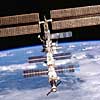
|
 |
Painting with oxygen and hydrogen
A new image from the Hubble Space Telescope is an example of 'painting with light'. Astronomers use the separated colours produced by oxygen and hydrogen to investigate star-forming processes in the nebula NGC 2080. The colours explain much about the nature of such nebulae.
 FULL STORY FULL STORY
 |  |
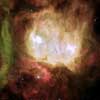
|
 |
|
Thursday:
October 18, 2001 | |
0057 GMT |
 |
NASA Administrator Goldin to leave space agency
NASA Administrator Daniel Goldin, who forced the agency to adopt a "faster, better, cheaper" approach to deep space exploration and oversaw initial assembly of the international space station, is stepping down amid space station cost overruns that threaten the future of the agency's showcase space program.
 FULL STORY FULL STORY
 |  |
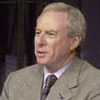
|
 |
Delta 2 rocket to launch QuickBird today
A Boeing Delta 2 rocket remains poised for launch later today carrying an Earth-imaging satellite that will snap the sharpest commercially available pictures of the planet's surface. Liftoff is set for 1851 GMT (2:51 p.m. EDT) from Vandenberg Air Force Base, California.
 MISSION STATUS CENTER MISSION STATUS CENTER
 LAUNCH PREVIEW STORY LAUNCH PREVIEW STORY
 DETAILED LAUNCH TIMELINE DETAILED LAUNCH TIMELINE
 QUICKBIRD BACKGROUND INFO QUICKBIRD BACKGROUND INFO
 ROCKET FACT SHEET ROCKET FACT SHEET
 |  |

|
 |
Strange trail suggests possible galactic interloper
Scientists have discovered what looks like a jet contrail, possibly left behind by a dwarf star traveling through interstellar space. Scientists found a straight and narrow filament of ionized gas stretching 2.5 degrees across the sky near the Big Dipper in the constellation Ursa Major.
 FULL STORY FULL STORY
 |  |

|
 |
Selecting better orbits for satellite constellations
Some Earth-orbiting satellites will be able to keep in touch longer with controllers on the planet's surface thanks to computer programs that mimic Darwin's evolutionary model of survival-of-the-fittest.
 FULL STORY FULL STORY
 |  |

|
 |
|
Wednesday:
October 17, 2001 | |
0247 GMT |
 |
Delta 2 rocket to launch QuickBird on Thursday
An Earth-imaging satellite that will snap the sharpest commercially available pictures of the planet's surface is awaiting blastoff Thursday atop a Boeing Delta 2 rocket from Vandenberg Air Force Base, California.
 MISSION STATUS CENTER MISSION STATUS CENTER
 DETAILED LAUNCH TIMELINE DETAILED LAUNCH TIMELINE
 QUICKBIRD BACKGROUND INFO QUICKBIRD BACKGROUND INFO
 ROCKET FACT SHEET ROCKET FACT SHEET
 |  |

|
 |
Galileo makes closest flyby of Jovian moon Io
NASA's Galileo spacecraft successfully completed a close flyby to study Jupiter's moon Io early today, during the long-lived spacecraft's 32nd orbit around Jupiter. The probe passed closer to Io than ever before, within about 112 miles of ground level near Io's south pole.
 FULL STORY FULL STORY
 GALILEO SEES, SNIFFS VOLCANIC PLUME GALILEO SEES, SNIFFS VOLCANIC PLUME
 |  |

|
 |
2001 ozone hole about same size as past 3 years
Satellite data show the area of this year's Antarctic ozone hole peaked at about 26 million square kilometers -- roughly the size of North America -- making the hole similar in size to those of the past three years. Researchers have observed a leveling-off of the hole size and predict a slow recovery.
 FULL STORY FULL STORY
 |  |
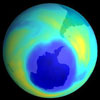
|
 |
Associate administrator for NASA spaceflight to retire
Joseph Rothenberg, Associate Administrator for Space Flight at NASA Headquarters, Tuesday announced his plans to retire from the Agency, effective December 15. No successor has been selected.
 FULL STORY FULL STORY
 |  |

|
 |
|
Tuesday:
October 16, 2001 | |
0151 GMT |
 |
Astronomers discover extrasolar planet 'cousins'
Astronomers announced Monday that they have discovered eight more extrasolar planets, including three that scientists called "cousins" of planets in our own solar system. This brings the total number of extrasolar planets, or exoplanets, to nearly 80.
 FULL STORY FULL STORY
 NASA NEWS RELEASE NASA NEWS RELEASE
 |  |
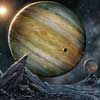
|
 |
Spacewalkers mount experiments outside Alpha
Russian cosmonauts Vladimir Dezhurov and Mikhail Tyurin on Monday conducted their second spacewalk in a week outside the international space station. The excursion mounted scientific experiments on the station's Zvezda service module.
 MISSION STATUS CENTER MISSION STATUS CENTER
 |  |

|
 |
Solar wind discoveries at solar maximum
The newest observations from the Ulysses spacecraft suggest the heliospheric chaos of solar maximum occupies a unique and rather short-lived portion of the solar cycle; the majority of the cycle is dominated by large polar coronal holes and a relatively simple solar wind structure.
 FULL STORY FULL STORY
 |  |

|
 |
|
Monday:
October 15, 2001 | |
0003 GMT |
 |
Alpha spacewalk on tap
Russian cosmonauts Vladimir Dezhurov and Mikhail Tyurin are preparing to make a second spacewalk outside the international space station. Monday's excursion, scheduled to begin around 5:15 a.m. EDT (0915 GMT), is designed to mount scientific experiments on the station's Zvezda service module.
 MISSION STATUS CENTER MISSION STATUS CENTER
 |  |

|
 |
Space research tests role of gravity in fertilization
NASA researchers have uncovered evidence that gravity, or the lack thereof, may play an important role in the development and evolution of life. The study suggests fertilization is gravity-sensitive and works differently in the near-weightless environment of space than it does here on Earth.
 FULL STORY FULL STORY
 |  |
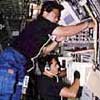
|
 |
NASA picks advanced technologies for test flight
In a step towards developing smarter spacecraft, NASA has selected three advanced technologies and providers for its next New Millennium Program test flight project. The technologies will fly on three different spacecraft in 2004, making up the Space Technology 6 project.
 FULL STORY FULL STORY
 |  |

|
 |
DAILY BRIEFING Other stories making news today
|
 |
JPL to build new instrument for galaxy studies -- NASA has chosen the Jet Propulsion Laboratory to provide the Mid-Infrared Instrument on the Next Generation Space Telescope, which will look back in time more than 90 percent of the history of the universe.
|
 |


 The Hubble Space Telescope's majestic view of the Eskimo Nebula. This spectacular poster is available now from the Astronomy Now Store.
The Hubble Space Telescope's majestic view of the Eskimo Nebula. This spectacular poster is available now from the Astronomy Now Store.